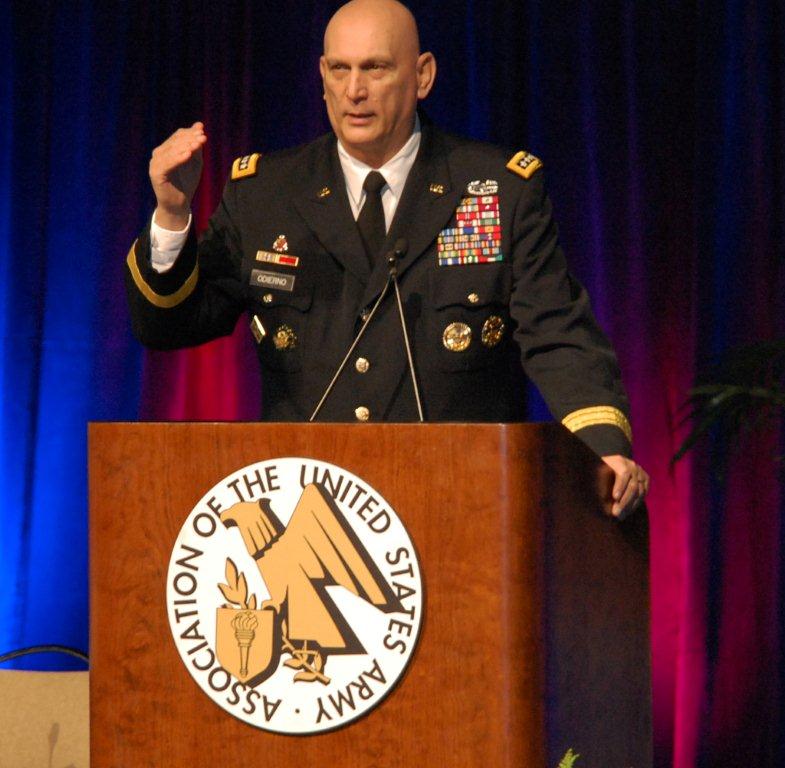Army Operation Concept – Addressing Future Army Challenges
Army Operation Concept – Addressing Future Army Challenges

C. Todd LopezArmy News Service While acknowledging the challenges that slashed budgets have wrought, the Army's chief of staff said the Army Operating Concept, or AOC, will actually help the Army address future challenges.Gen. Ray Odierno addressed soldiers and industry representatives during the 2015 Association of the United States Army Global Force Symposium and Exposition in Huntsville, Ala., April 1.He said the budget cuts have reduced manning, readiness and modernization, but he then spelled out some of the things that would be needed for the service to continue operating in the current and future global security environment. "I truly believe that these are really quite significant, critical times that require action, that require important dialogue, about our enduring defense capabilities," Odierno said. Force cuts affecting the strategic global security environment mean that the Army must develop new concepts for how it operates, he said.The Army's answer to that challenge is the new "Army Operating Concept" titled "Win in a Complex World.""It's our path to discover new concepts, to synchronize, integrate, and lead ..." Odierno said.Adding, "The AOC focuses our efforts to turn concepts into capabilities as we build the future force."Odierno said that in the AOC, as is the case now, the soldier and the squad "will remain the centerpiece of our formations, and at the heart of this strategy."As such, Odierno said supporting AOC means a focus on enhancing soldier lethality, protection and situational awareness.The Army must also increase employability, lethality, mobility and survivability of Army maneuver formations. Also to be improved, he said, is mission command -- with investment in networks including expeditionary command posts.Need for new Infantry Fighting Vehicles and tanksOdierno also called for mobile protected firepower, and combat vehicles that emphasize balance with mobility, lethality and protection.He said the Army's command and control footprint must be reduced while, at the same time, allowing information to continue to flow unimpeded to soldiers on the move.The Army must also invest in light reconnaissance and security capabilities, missiles and interceptors must be upgraded, and the Army must invest in a new Infantry Fighting Vehicle and a tank with "autonomous capabilities.""Today, our nation is facing enormous challenges," Odierno said.America is facing enemies with the desire and the capability "to threaten not only our security, but the security of our allies," he added.Range of threatsHe also laid out a series of threats, including those in the Middle East, Asia, and Russia.He said the United States continues to face threats stateside as well. And, while those threats continue to grow and accelerate, he said the Army continues, "to divest of our military capability and capacity, and therefore our risk continues to grow."As a result of budget woes, Odierno said the Army has cut 80,000 soldiers and reduced by 13 brigade combat teams. The Army is also in the process of eliminating three aviation brigades out of the active force.In addition to manpower and force cuts, he said, modernization has been cut by 25 percent.Included among those cuts to modernization were the Infantry Fighting Vehicle modernization and the Scout Helicopter developmental program. Fiscal challengesAdditionally, budget cuts have degraded readiness, he said. Only 33 percent of brigades are ready to fight, when the number should be 70 percent."We are only generating enough readiness for immediate consumption," Odierno said."We are unable to generate residual readiness to respond to unknown contingencies, or to reinforce ongoing operations. And under our current budget, Army readiness will at best, flat-line over the next three to four years, and cause us to continue to reduce our capabilities in the active component, Army National Guard and Army Reserve," he added.Those cuts to manpower, force strength and modernization, and the effects on Army readiness, have very real effects on what the Army will be able to do, he said.It will be difficult for the Army to meet commitments to international partners, Odierno emphasized.The cuts will also make it difficult, if not impossible, for the Army to conduct more than one operation at a time -- to deter in one place and defeat in another.For ground forces, he said, more sequestration "puts into question our ability to conduct one prolonged, multi-phased combined arms campaign."He said more cuts degrade the Army's ability to shape the security environment, or prevent conflict in multiple regions at the same time.Further cuts, he said, "limit our strategic flexibility, and require us to hope we can predict the future accurately, something we've never been able to do."

